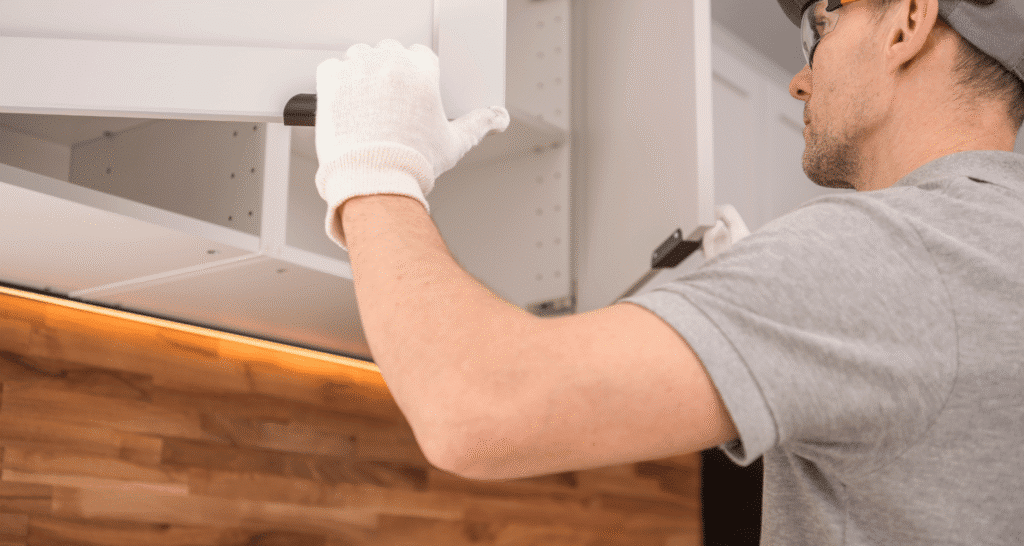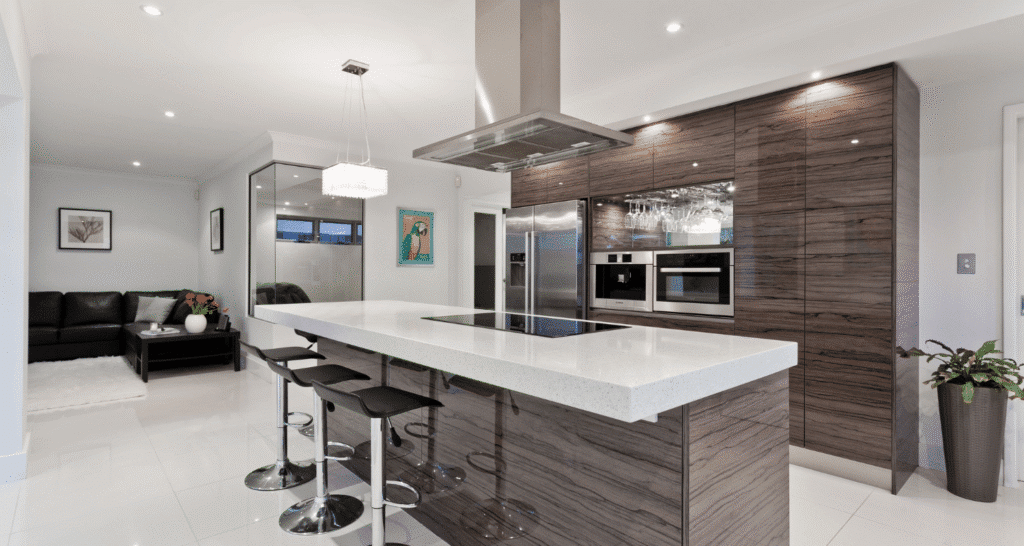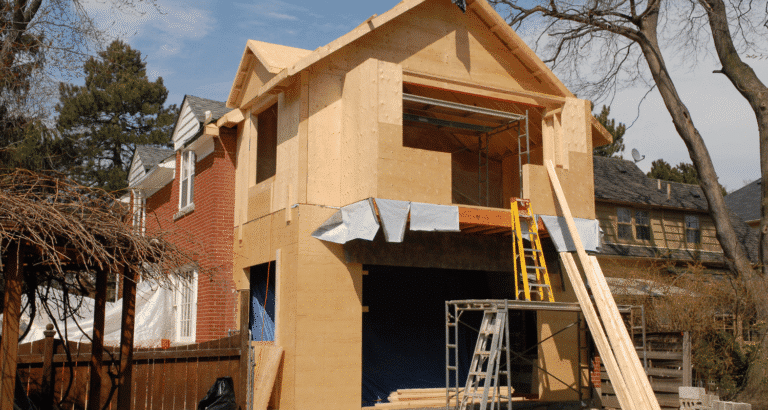Kitchen remodeling is a worthwhile investment that a homeowner should consider, as it can be worth the cost, albeit expensive. Whether it is new cabinetry or state-of-the-art appliances, the budget may go out of hand, so kitchen remodel financing is indispensable in the planning process. The initial task when it comes to a small kitchen renovation or an extensive redesign is to look into proper sources of funding.
There are several financing options available, including kitchen renovation loans, personal loans, credit cards, and home equity products, which can help bring your renovation dreams to life. This manual outlines the best methods for funding a kitchen renovation without encountering problems.
Set a Budget Before Seeking Financing
Before committing to any kitchen upgrade loan or credit alternative, it is essential to be realistic about the budget. Homeowners can determine the cost of the remodel, which enables them to select the appropriate financing product, ensuring they do not borrow more than necessary.
This step can also be effective in identifying which elements of the renovation should be a priority and in which areas adjustments to the costs could be made. When a precise estimate is made, the likelihood of the project being late or running out of funds decreases. Both a personal loan remodel option and contractor financing can be implemented through a contract; however, it is best to begin with a solid financial plan that ensures the project proceeds smoothly.
Consider a Home Improvement Loan
Larger kitchen remodeling work is often financed by taking out a home improvement loan. These loans are typically personal loans, usually offered as unsecured options by banks, credit unions, or online lenders. They also offer fixed interest rates and repayment periods, making budgeting straightforward.
This type of loan is preferred by homeowners when quick access to funds is necessary, but the home is not used as collateral. Unlike secured loans, they are usually fast and easy to apply, but they are sometimes more costly than secured loans. This type of financing offers flexibility and predictability for medium to extensive kitchen renovations.

Explore Personal Loan Remodel Options
A remodel personal loan is best suited when the kitchen upgrade is minor or the individual has a high credit score. The loans may be applied to almost all the costs relating to renovation, including appliances, flooring, and cabinetry. They are available to tenants and homeowners who still have a newer house, as they do not require a home equity loan.
The borrowers are given a lump sum in advance and pay back the loan at fixed monthly rates. The credit score determines the interest rates; thus, a user with a good rating can obtain more favorable conditions. Personal loans tend to be an ideal choice when doing a faster kitchen renovation, and it does not make sense to borrow against a home.
Use Home Equity for Larger Renovations
Home equity products are also commonly used to finance major kitchen renovations, with examples including Home Equity Loans and Home Equity Lines of Credit (HELOCs). The equity of the home is used as security to secure the loans, and they usually have lower interest rates than unsecured loans.
A home equity loan offers a lump sum of money, whereas a HELOC provides funds on demand, similar to a credit card. They can be used by homeowners who intend to undertake massive renovations accompanied by structural modifications or premium finishing. Nevertheless, these loans can expose the house to default, and this is why they must be used wisely.
Kitchen Remodel Financing with Credit Cards
Charging a remodel on a credit card may be helpful for smaller-scale jobs or as finishing touches, such as new lights or appliances. Other homeowners prefer to use this approach to take advantage of introductory 0% APR rates, offering to purchase kitchen items on an interest-free basis over a predetermined period.
The rates can, however, increase immensely after the end of the promotional period. Credit cards are only advisable to use when the individual borrowing money is certain that they will be able to pay the balance within the no-interest period. Otherwise, credit card debt can be costly in the long run and may negatively impact credit scores.
Contractor Financing Options
Some contractors offer in-house or third-party financing, where the homeowner pays the service provider directly to undertake the kitchen renovations. This type of financing is typically convenient, as it is less cumbersome to apply for and make payments.
This can be in the form of promotional rates or payment terms at the contractor’s discretion. Nevertheless, it is necessary to read the small print and compare it with what the banks or credit unions offer. Although this option is likely to accelerate the renovation, not every financing option contract is expected to be delivered at the most competitive terms and rates.
Government and Local Assistance Programs
In other areas, house repair loans or grants are also available through local or federal programs to assist with financing the renovation of the house, including kitchen renovations. These plans typically target low-income to middle-income families or the renovation of older homes.
For example, it is possible to finance kitchen remodels and other home improvements using FHA 203(k) loans. Such loans are more intricate than the regular types of loans, but they can also be of great help to entitle homeowners. Additional sources of remodeling funding can also be found through research of local housing authorities or energy-efficiency programs.

Cash-Out Refinance for Kitchen Remodel Financing
A cash-out refinance is the renewal of a pre-existing mortgage after it has been replaced with another loan that typically has superior terms and a higher balance. The additional money is later used in renovations.
This plan can be applied by homeowners seeking to capitalize on improving interest rates and obtain a large loan to remodel their kitchen completely. Since this technique involves modifying the terms of the mortgage, it entails additional closing costs and a lengthy approval process. Nevertheless, it is also an affordable mechanism for funding major rehabilitation works and can even reduce mortgage payments in the long term.
Combining Multiple Financing Sources
Other home buyers opt to mix financing options to strike a balance between immediate costs and future payments. For example, a credit card can be used for immediate purchases of materials. In contrast, personal loans, home improvement loans, and other similar types of financing can be used for most labor and structural work.
This combination can be flexible and save interest in total with proper handling. There should be a clear budget and regular monitoring of expenditure to avoid overlapping debts. Mixing finance sources could allow time to obtain the financial breathing space to complete a renovation without committing too much.
Things to Consider Before Choosing a Loan
To secure a kitchen renovation or loan, the proprietors must consider their credit score, financial income, current debts, and any long-term financial objectives. Among the financing methods, each has distinct advantages and disadvantages, and what might be beneficial to one homeowner may not be helpful to another.
It is crucial to review the terms of loan repayment, including the interest rate, as well as other potential risks, such as securing the loan against a house as collateral. It is also important to compare lenders and carefully review the loan conditions to avoid unexpected expenses. Prudent planning will help establish that the method of financing the kitchen renovation is beneficial not only in terms of the renovation itself, but also in terms of the future budget.
Avoid Over-Borrowing
One is tempted to get an outstanding loan to finance all dream upgrades, but what is more, borrowing far more than needed can cause a lot of trouble in the long run. And a good-looking kitchen is not worth a more stable financial position. A firm budget should be established, prioritizing necessary upgrades and borrowing only for essential expenses, which can help prevent excessive debt.
Regardless of whether you take a home repair loan or contractor financing, the most important thing is to stay within your budget so that you do not end up regretting and wishing you had not spent so much on that house repair. Borrowing sensibly turns the renovation into an enjoyable and sustainable process of a long-term nature.
Conclusion
The funding of a kitchen renovation should be thoroughly planned, and one has to be confident about what to seek. Whether it is kitchen renovation loans, home equity lines, personal loans, or credit cards, the delivery modes have their advantages based on the scale of the project and the homeowner’s financial standing.
The most important thing is to read the terms, compare offers, and stay within a reasonable budget so that the remodel process becomes successful and does not cost an excessive amount of money. Builders Group Construction provides integrity, quality, and detail as a reliable guide and renovation service throughout the project execution process.
FAQs
Can I get a loan to remodel my kitchen?
Yes, various loans can be taken out to remodel a kitchen, including personal loans, home improvement loans, home equity loans, and kitchen remodeling loans. The most preferred way depends on your credit, the equity you have, and the extent of the remodeling.
What is the best way to finance a remodel?
The most appropriate source of finance will depend on your objectives. Still, generally speaking, home equity financing comes in the form of home equity loans and HELOCs, which offer low interest rates and are ideal for funding large projects. On the other hand, personal loans or credit cards are best suited for minor fixes. The key consideration when making a decision is to compare the terms and interest rates applied.
What is a reasonable budget for a kitchen remodel?
The cost of a good kitchen remodel ranges from $15,000 to $50,000, which depends primarily on the size, materials, and alterations to the kitchen plan. Expensive remodeling or building renovations can cost upwards of $ 75,000.
Does Home Depot offer financing for a kitchen remodel?
Yes, Home Depot offers financing options for kitchen remodeling, including project loans and credit cards with promotional interest rates. The terms can vary, and thus it would be beneficial to compare them with other lenders to determine what best suits your needs.








